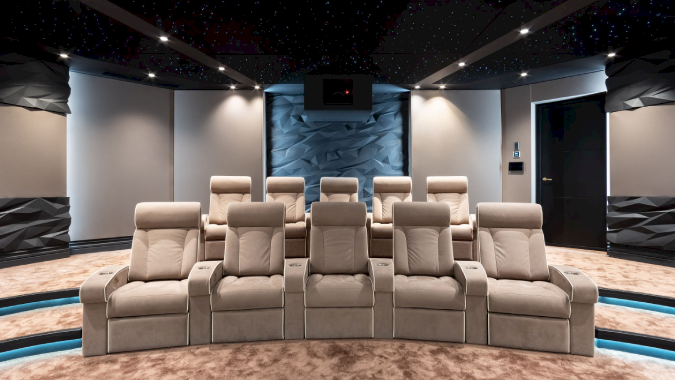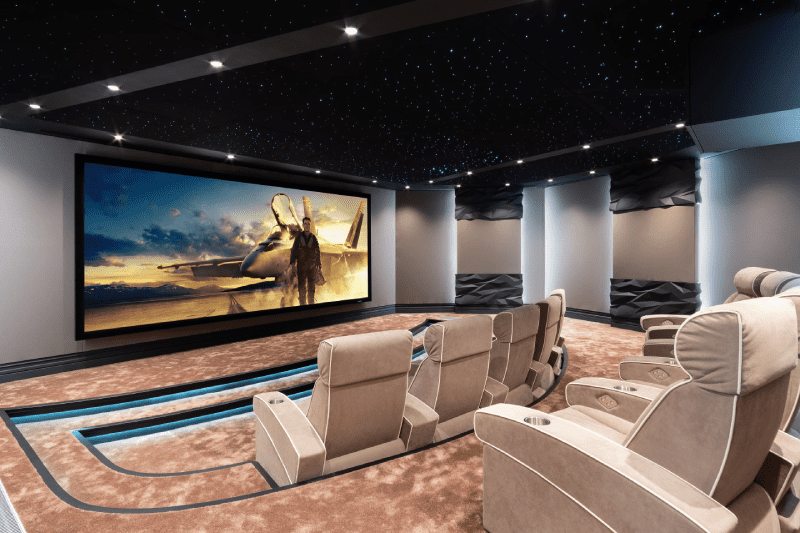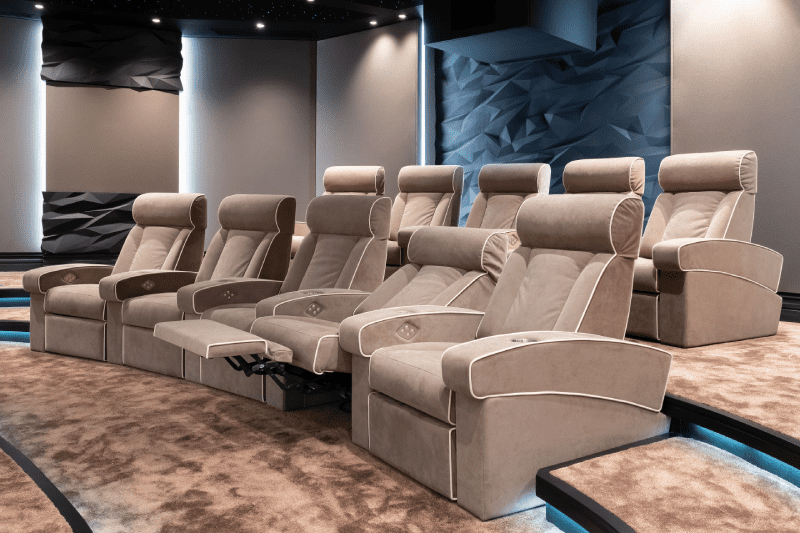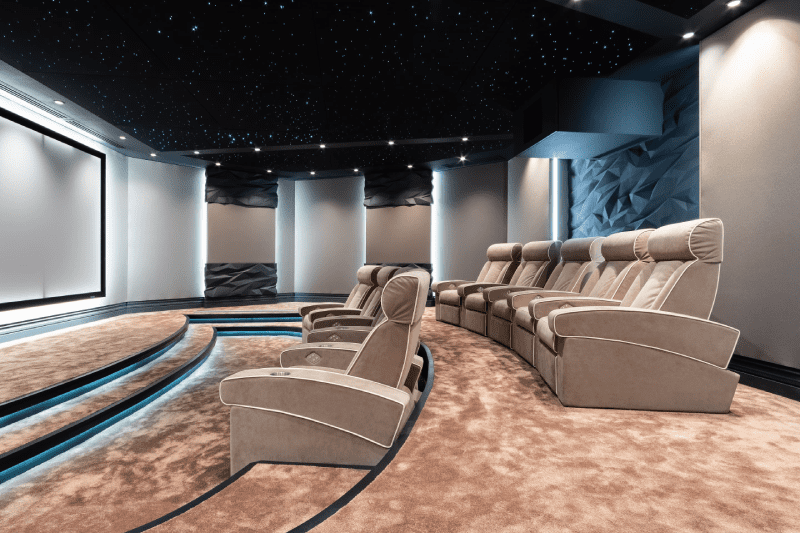
Blackroom takes us in the behind the scenes of their Stingray home theater project. The room was basically very far from CEDIA's standards. Having 8 corners, it posed some serious acoustical and technical challenges.
Blackroom has successfully turned the room into this magnificent reference home cinema, featuring a 9.1.4 Alcons system and powered by an Altitude16 processor.
What were the performance objectives for this design?
Stingray home cinema project was intended to achieve all needed reference levels of performance in terms of audio and video. It was also aimed to be impressive in terms of feel and look – the interior design and lightning part. The task from the homeowner was: “I love watching movies and I want to be WOWed by the theater!”
Share all technical details and calculations made for this cinema's system power management.
As stated in the power consumption and heat dissipation calculations peak power requirement for the AV-system is 8,1 KW. Equipment rack has 4 power strips connected to electric panel using 16A breakers.
Lightning system power design was out of scope of our work in this project and was done by the external contractor. Same for the HVAC systems.
1,5 KWA UPS system was implemented to support critical system equipment function in case of emergency power interruption or surge. All power interruption sensitive equipment (projector, pre-pro, control processor, LAN switch) is connected vie separate power strip to a UPS and is functional to support proper system shut-down.

Describe acoustical considerations.
The initial room layout from the beginning was far from being “perfect” in terms of predicted acoustical behavior. Asymmetrical rhombus-like form of the room had 6 internal and 1 external corners. The initial room plan had 71 square meters. To make it more acoustically practicable we had to build a separation and make the room symmetrical leaving it with 61 sq.m. of useful area to build from.
The room was fully soundproofed by installing multi-layered acoustical shell on all the room surfaces which is also always good for taming excessive bass energy.
Explain the speaker and sub placement in this installation.
The cinema has 9.1.4 with 8 subwoofers Dolby Atmos system which was designed to fit into budget and Trinnov Altitude’s 16-channel capabilities.
Front LCR speakers are located behind AT-screen to provide the perfect screen-to-sound coherence.
Wide and side surround speakers are hidden in the semi-columns behind the AT-panels. Rear surround speakers are also hidden behind the fabric AT-panels on the rear wall of the theater. These semi-columns were designed particularly for hiding those speakers in the perfect angles to the MLP. Performance is always on the 1st place in all of our projects!
Height speakers are attached to the ceiling and hidden behind starry ceiling AT-panels.
All the speakers are perfectly aimed to the center of the audience (a point in the center in-between the two rows of seating).
4 subs in the front and 4 subs in the back of the room are symmetrically placed in the “quarter-points” of the room to provide maximum flexibility in terms of calibration and bass-smoothing properties of the audio system. We totally understood that such «unperfect» 8-cornered room will not behave as a regular rectangular room in terms of standing waves, but no better solution for strategically and ergonomically correct sub placement came to mind regarding all the limitations of the room layout and interior design.

And it really worked well for the room as calibration process showed.
We also decided not to add 2 more height channels because it led to adding one more Alcons amp which increased budget over the stated limit. It would also be extremely hard to place those additional speakers on the ceiling right due to asymmetrical concrete beams and the pattern of fabric starry ceiling panels.
Discuss installation considerations and provide any calculations made for HVAC for this cinema.
HVAC system was designed and installed by the client’s contractor based on our recommendations and equipment heat dissipation calculation (2360W for the theater, 2820W for the equipment room). It was considered that the theater room should handle 15 people max – that is 1740W of heat to handle. It was also recommended to provide 60 cubic meters of fresh air for each cinema attendant. It led to installing a separate HVAC system for the cinema.
According to our calculations all the equipment can produce up to 3440W of heat. This led to installing a separate ceiling 3,5KW AC system in the technical room.

Explain why any compromises were made from CEDIA and/or other industry standards.
We have done our best to make very odd-shaped room to sound, look and feel perfect. So the initial room the client had was the biggest CEDIA standards deviation..
We would also like to install a 10" bigger screen to have 62 degree viewing angle for the MLP but the room dimentions didn't let the projector throw ratio to fit in and lit a wider screen.
Share any additional customer requirements or technical challenges.
The HVAC system for the projector was not initially capable of handling the amount of hot air produced by the projector. So together with the contractor we had to add several intake and outtake fans and a digital temperature meter for the projector hush-box to mitigate the problem.

